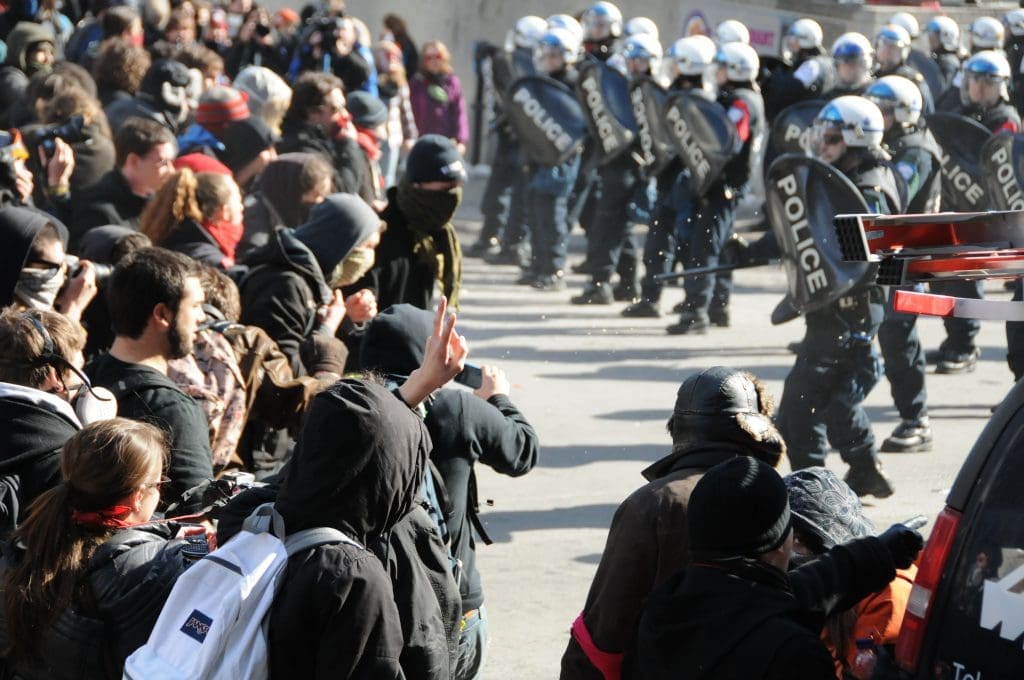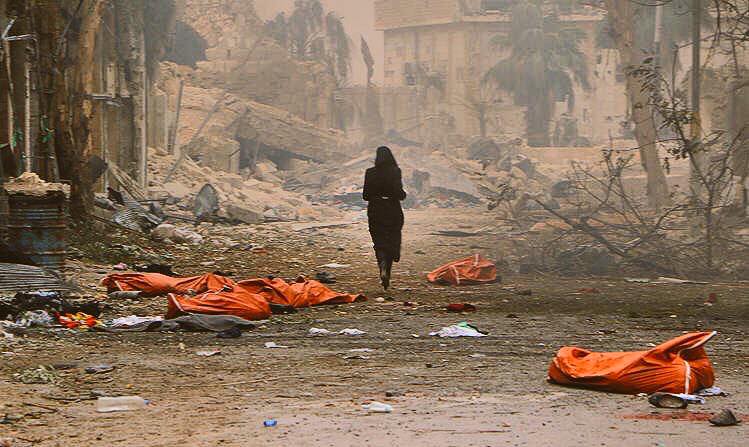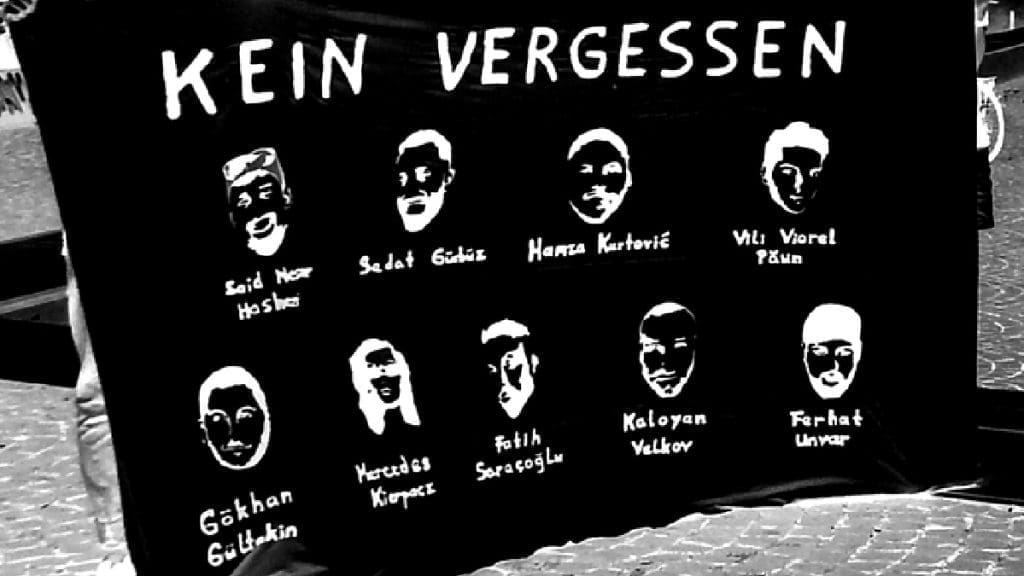AntiNote: We encountered this article in German at Eisbrecher Wuppertal (via Linksunten Indymedia) shortly after the clashes around the grand opening of the new European Central Bank headquarters in Frankfurt last Wednesday. True to form, the dominant German-language media (and even much of the ‘alternative’ media) has been apoplectically clutching its pearls about the targeted property damage that the first phase of #M18 protests included in their largely successful blockade of the ribbon-cutting—while the dominant English-language media has been mostly silent.
This is a crying shame, considering that Blockupy 2015 represented a significant expansion and escalation of the continent-wide anti-austerity movement and should be considered in this context. This article provides some background on Blockupy (which grew out of the global Occupy movement and has learned and grown in the face of violent state repression—where nearly every other Occupy site faltered), and proposes applying similar levels of targeted militancy more broadly.
“Violence” at Blockupy Frankfurt: Enough with the Hypocrisy!
by some activists from Wuppertal, Germany
20 March 2015
In the country which is the world’s fourth-largest arms exporter, there were hours-long street clashes last Wednesday [18 March 2015]. After the massive repression faced by Blockupy activists in 2012 and 2013, state power lost control—at least for a short time—of entire sections of the city of Frankfurt.
Of course, the discourse over “violence” has dominated media reports. We should gladly engage in these discussions, so that conditions might change and we can finally put an end to the real structural violence all around us every day under capitalism.
In 2012, there was an orgy of state bans on Blockupy actions; even a proposed concert by Konstantin Wecker was banned. Ultimately, the only demonstration allowed in Frankfurt was one along an officially designated route…and Blockupy 2012 was nonetheless rewarded for its compliance with massive police violence, including by police battalions from Wuppertal.
In 2013, even this selfsame march was banned. And when the Blockupy Alliance lodged a successful legal appeal against the ban and marched anyway, state power solved the problem by kettling the first thousand people at the front of the demonstration—effectively ending the march after only a few hundred meters. The state made clear that it can and will stop a demonstration if and when it likes, regardless of whether it is peaceful or not, and regardless of what the courts decide.
If they don’t want a demonstration, they’ll keep it from happening. This was once again evident in December 2013 at the Rote Flora demonstration in Hamburg. Whereas the Blockupy 2013 demonstration made it several hundred meters, the Rote Flora demonstration was violently ended by the police after only about fifty meters.
During the police press conference before the long-anticipated ECB opening, state and capital showed—not for the first time—that any resistance to the lethal politics of the Troika in Frankfurt would have to contend with massive repression and police violence. This was a bald-faced tactic of intimidation to prevent potential demonstrators from traveling to Frankfurt at all. They announced the mobilization of a martial police-army: nearly 10,000 police officers would be called to service; 100 kilometers of fencing with NATO barbed-wire, dozens of water cannon trucks and armored vehicles, several helicopters and even an airplane would be deployed.
The tone was set. The state made it all too clear in this press conference that it intended to build on the repression already seen in Frankfurt in 2012 and 2013.
Already in 2012, many people had had problems with the way Blockupy’s [nonviolent] Action Consensus delivered activists, unprotected, into situations of extreme police violence. Such misgivings were even greater after the kettle of 2013. It would have been possible to break up the 2013 kettle and free the people caught inside if, at the very beginning, the still-thin police lines at the rear of the kettle had been broken. After the police reinforced these lines, this was no longer possible—or could have been managed only with difficulty—but either way, such a breakthrough would have violated the Action Consensus, so it was not attempted.
In this sense, people were trapped not only by the police, but also by the Action Consensus. At least many people felt this way. The Blockupy Action Consensus was, from this point on if not sooner, no longer valid in the minds of many activists.
Blockupy 2015 took place at a time in which capitalism has been showing its snarling face ever more shamelessly. Something meaningful must be done to counteract the structural violence that radiates from the capitalist system each and every day. Of course, revolution did not break out last Wednesday, but it was not simply political masturbation either, even if the former Pirate-partisan and Berlin parliamentarian Oliver Höfinghoff wrote as much in Vice Magazine.
(Revolutions have never broken out in parliament, by the way—at best only counterrevolutions. Karl Liebknecht sends his regards.)
As groups of people began mobilizing early Wednesday morning in Frankfurt, it was a short, sweet moment of liberation. After the massive repression against Blockupy in 2012 and 2013, state power lost control for a little while. Around a thousand people set out and within minutes diverse actions were being resolutely carried out within sight of the European Central Bank [a proximity not achieved by previous Blockupy protests]. Barricades were built, the first windows went to pieces, and a few police cars went up in flames.
Rage against the everyday violence of the deadly capitalist machinery was taken to the streets in Frankfurt. State power was, for a short time, forced into the defensive. It was a moment, if just a short one, in which people showed that they are not powerless. We don’t have to helplessly accept the grinding repression of the state.
We need more such moments, not fewer. And not only in connection with large action “events,” but rather with an eye towards the everyday—the everyday struggles in the neighborhoods where we live. A forced eviction, for example, must become dangerous for those doing the evicting, not for those being evicted. When and where militancy could play a sensible role in our struggle—and when and where it doesn’t—should be something we are constantly discussing and deciding upon.
We will not line up with the rows upon rows of hypocrites who silently accept the heaps of dead left by the German export industry but who, remarkably, cry out in shock at the sight of a burning police car. We also will not line up with reformist leftists who think, unaccountably, that some kind of “capitalism with a human face” can be achieved. Whoever thinks that the current lethal capitalist conditions can be overcome without militancy has not yet grasped that capitalism defends itself with violence even against peaceful activism.
When Allende came to power in Chile in the 1970s—through democratic elections—he was deposed and murdered in a military coup d’etat in the course of which thousands of people were killed or disappeared. In a low-level manner, glimmers of the same kind of violence could be seen in the police actions against Blockupy activists in 2012 and 2013. Of course, Blockupy cannot be compared with Chile. Nonetheless, state power has unquestionably shown that it will not tolerate even peaceful anticapitalist protests that exceed certain norms, and will respond to them with violence.
There was never a completely peaceful anticapitalist revolution, and there never will be, because capitalism’s defenders have always violently beaten them back, and always will.
We live in a society that unflinchingly allows thousands of people—people trying to escape conditions produced by the current economic order—to drown in the Mediterranean. We live in a society that delivers arms to dictatorships while simultaneously blathering about democracy. A society that makes war in Afghanistan while speaking of “peace” at home.
We live in a country that leveled half of Europe—twice—in the last century, but in which people freak out if someone gives us the middle finger when people in other countries have their lives destroyed at the shit-end of our trade surplus. The hypocrisy of people who wail when it gets popping in the German streets but say nothing about the everyday structural violence produced by their own society—this hypocrisy can be our measuring stick.
Nevertheless, militancy is a high-wire act. If we want to put an end to everyday capitalist violence, and if we also hold the opinion that this won’t happen without further violence, this requires permanent reflection and examination of ourselves and of the society in which we live, if anything is ever going to change. Where do we stand? What are our next steps? What gets us further and what doesn’t?
Frankfurt has shown how people can wrest power from the hands of the state at least for a short time. But there were, after the opening phase of conflict, random attacks that were, in our opinion, counterproductive. For example, a building in which young refugees are housed allegedly had its windows broken. We categorically reject attacks on shelters for migrants, even if they happen only by accident.
[New reports assert that this particular attack did not happen at all; it was invented by an increasingly propagandistic German press. The Wuppertaler activists need not wring their hands about it anymore. –ed.]
Since activists repeatedly had to chase off Nazis, it cannot be ruled out that some attacks were carried out by Nazis—but this is just speculation, and the fact remains that after the initial phase of conflict there were several actions that we find unacceptable. We regard the attacks on small mom-and-pop stores, and the smashing of windows of a tram with passengers inside, as counterproductive to say the least.
There were many activists who immediately engaged the people involved in these seemingly random acts and saw to it that they stopped, and we think this was to the good. Even if the aforementioned hypocrites lack the power of reasoning to weigh the death wrought by German arms against a burning police car or a smashed bank window, we should be able to clearly distinguish between a mom-and-pop store and more legitimate targets.
Blockupy 2015 is over; now it is time we attempt to carry this momentum into the everyday struggles in our own neighborhoods. We won’t likely deploy the same level of militancy all that often, but the militant conflict around the ECB grand opening in Frankfurt will surely not have been the last.
We demand an end to capitalist violence! An end to capitalist military intervention! An end to capitalist logic and to the dictatorial devices like those evoked and effected by the Troika, that not only exploit people in sweatshops but also kill! An end to environmental destruction! An end to the humiliation of the Hartz-IV [unemployment allowance] regime! An end to racist agitation and the systematic subjugation of women! We demand an end to all violent and coercive structures of domination!
See you in the streets!
Featured Image Source: North East Antifa (Twitter)





